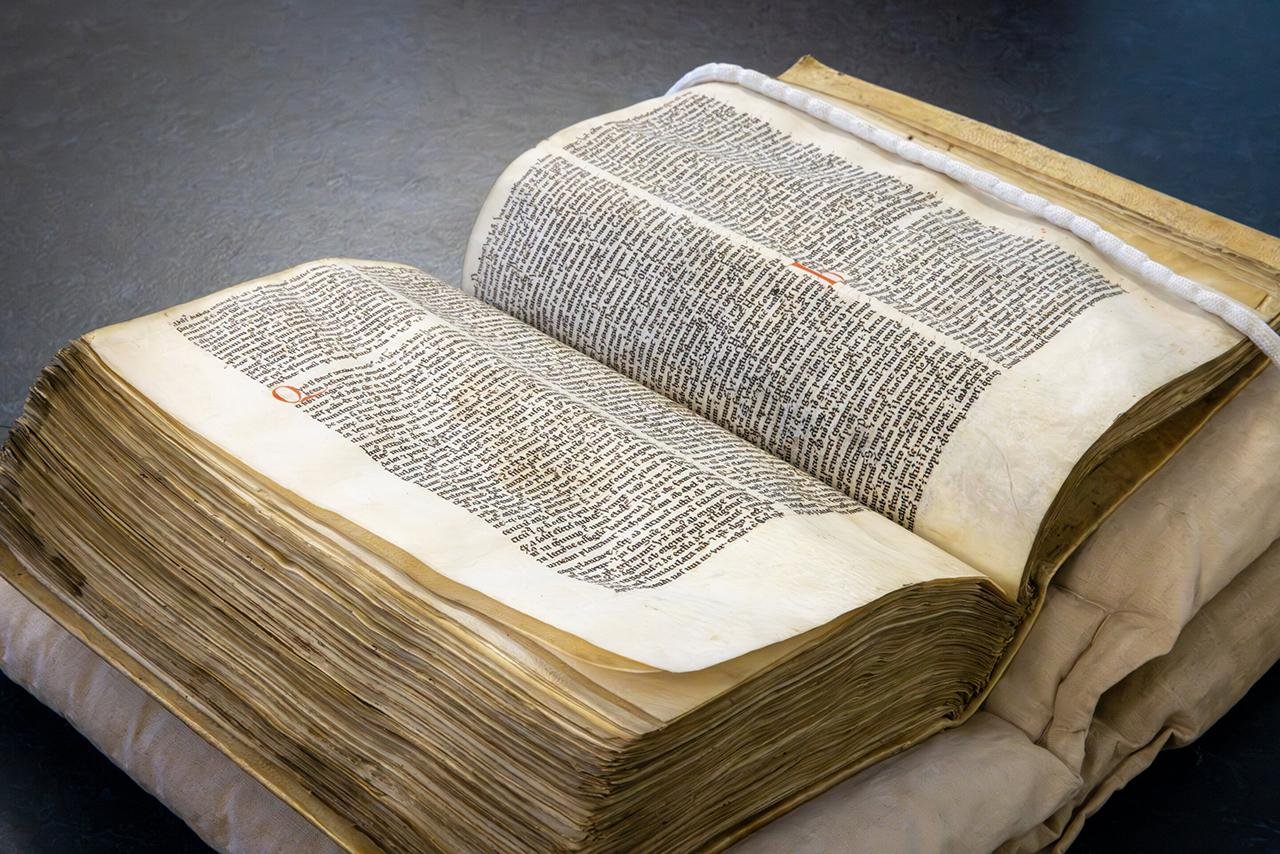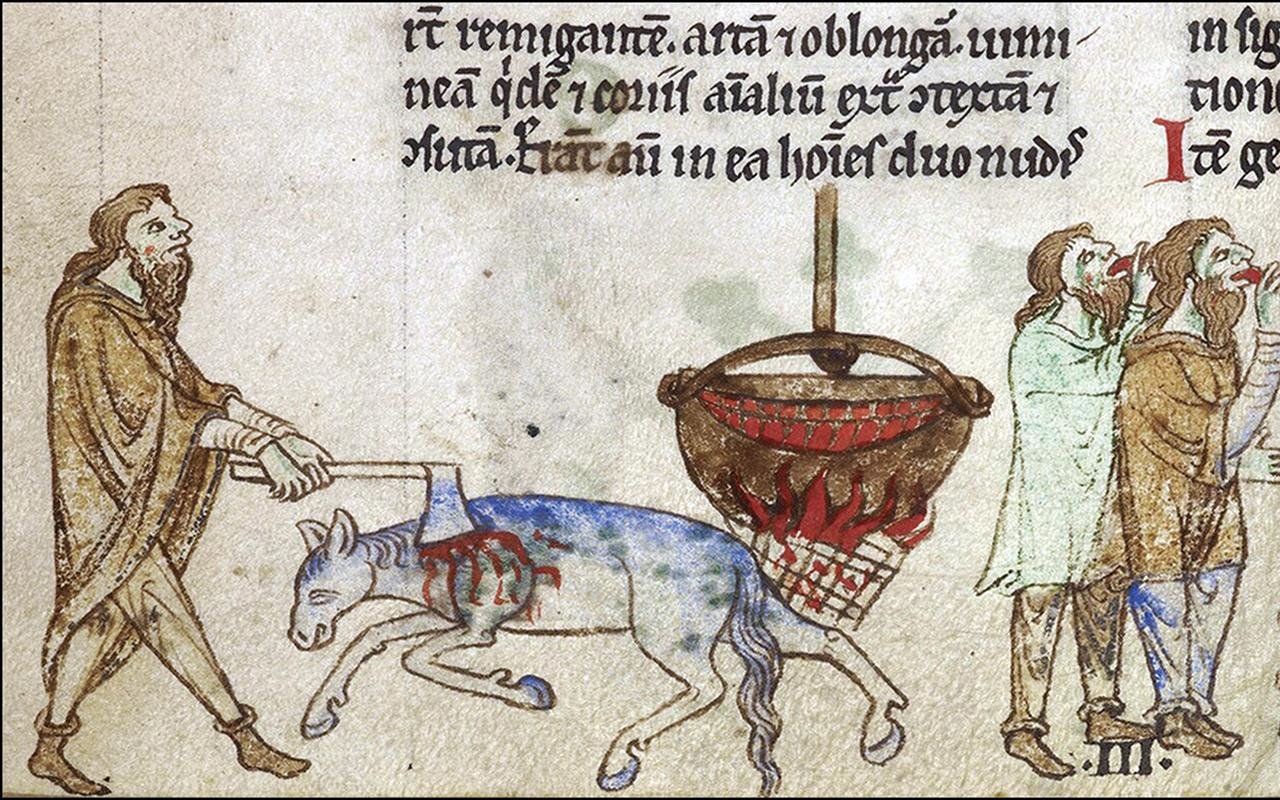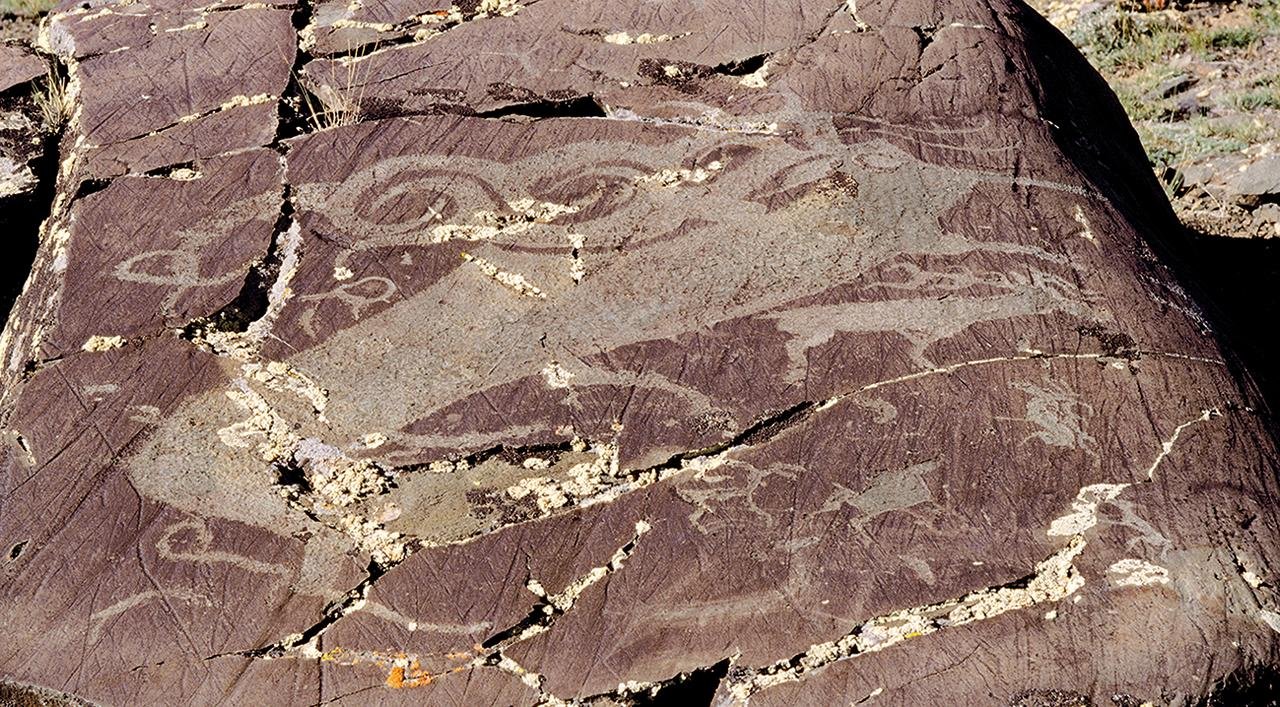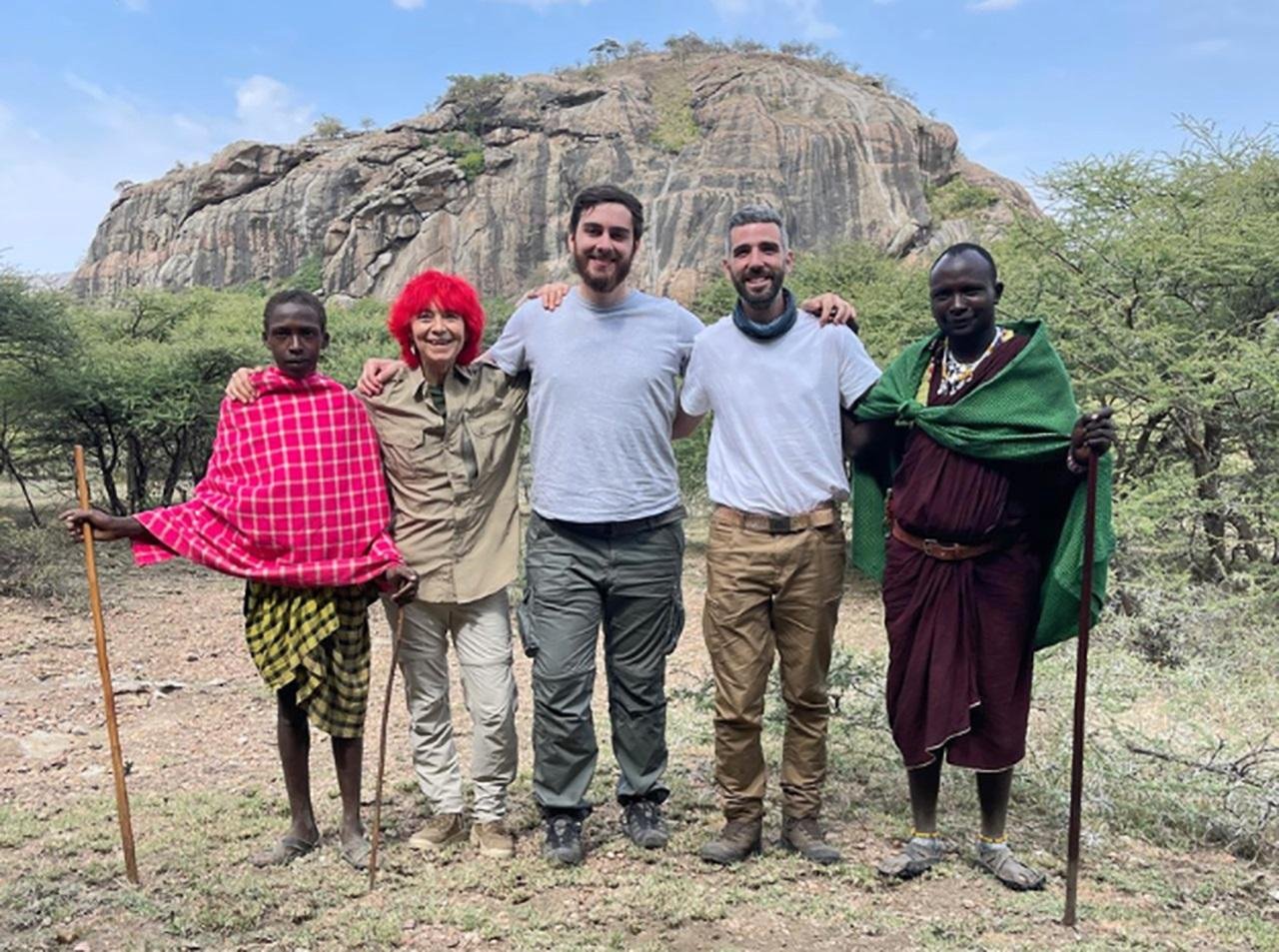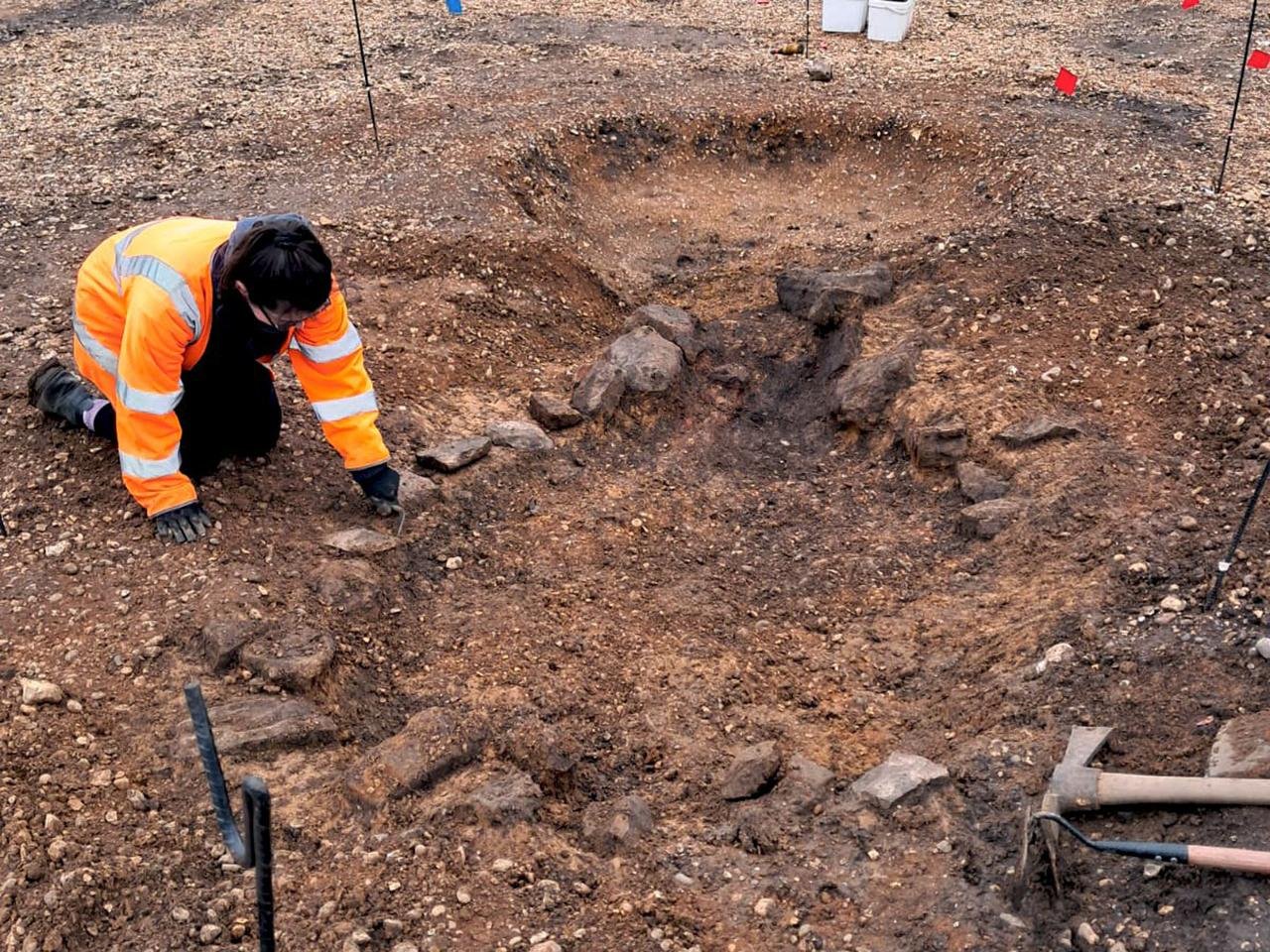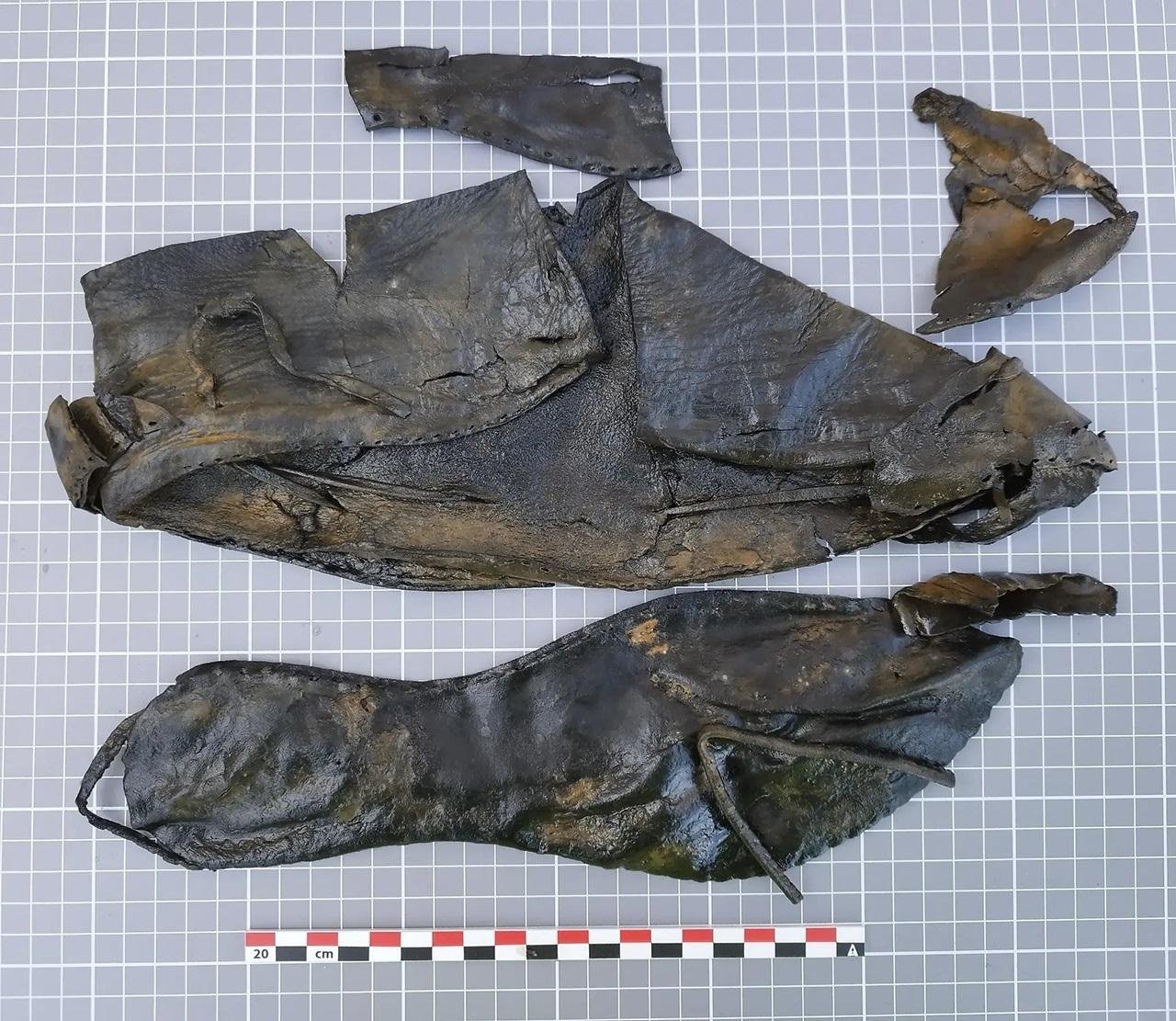After four years of debate surrounding the alleged pregnancy of an ancient Egyptian mummy, a new international study has announced the claim to be incorrect. The mummy, known as the “Mysterious Lady,” was originally thought to be a male priest based on inscriptions on its coffin, but it was later determined that the mummy belonged to a woman around twenty years of age. In 2021, researchers from the Warsaw Mummy Project (WMP) suggested that she had been pregnant at the time of her death.
 The mummified woman who is the subject of the current study. The mummy belongs to the University of Warsaw and is exhibited at the National Museum in Warsaw. Credit: K.Braulińska
The mummified woman who is the subject of the current study. The mummy belongs to the University of Warsaw and is exhibited at the National Museum in Warsaw. Credit: K.Braulińska
The recent study, led by archaeologist Kamila Braulińska from the University of Warsaw, and published in the Journal of Archaeological and Anthropological Sciences, sought to verify the previous claims by using advanced radiological analysis. The team of fourteen international experts reexamined over 1,300 raw computed tomography (CT) scans of the mummy from 2015, concluding that there was no fetus in the Mysterious Lady’s abdomen, but that, in fact, what was thought to be a decomposed fetus was actually the material used for the embalming process.
The claim of pregnancy first emerged in 2021, when archaeologists Wojciech Ejsmond and Marzena Ożarek-Szilke from the WMP proposed that the mummy was roughly 28 weeks pregnant. They stated that the previously acidic and low-oxygen environment had created an unusual chemical process that effectively “pickled” the fetus inside the mother’s body.
 2D and 3D reconstructions of the mummy’s skull imaged in computed tomography. Credit: K. Braulińska, Ł. Kownacki
2D and 3D reconstructions of the mummy’s skull imaged in computed tomography. Credit: K. Braulińska, Ł. Kownacki
The new research strongly disputes this theory. According to the researchers, “acids within the human body are insufficient to dissolve bone, especially after a body is embalmed.” Furthermore, the current study found no evidence to support the earlier suggested claims of nasopharyngeal cancer in the Mysterious Lady. Researchers noted damage to the skull, however, they believe it likely occurred as a result of removing the brain when the deceased was mummified, and not as evidence of disease.
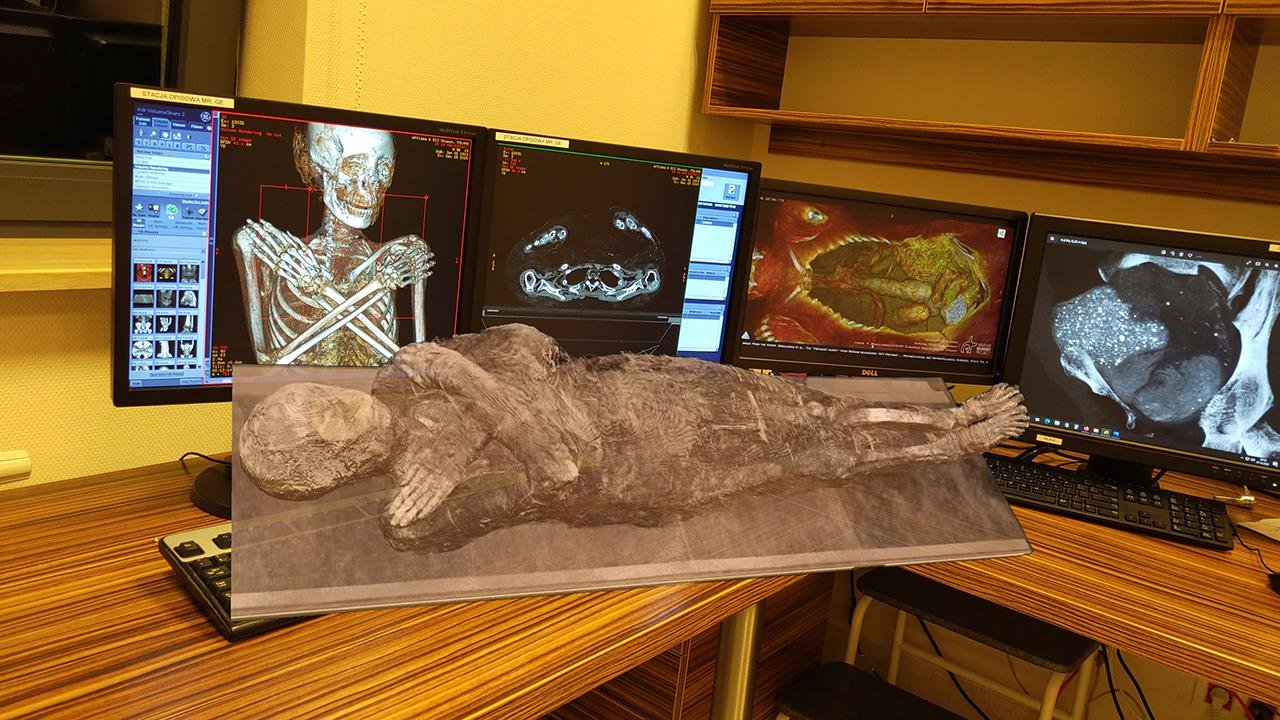 A mixed reality (XR) system allows the user to virtually position a fully reconstructed mummy on a desk at any scale. Credit: Ł. Kownacki
A mixed reality (XR) system allows the user to virtually position a fully reconstructed mummy on a desk at any scale. Credit: Ł. Kownacki
As a radiologist, Dr. Łukasz Kownacki, who conducted the original CT scan, had questions about the initial attribution of pregnancy and cancer and suggested that pareidolia, which refers to a psychological phenomenon in which observers think they see familiar patterns in random images, was at play. He noted that no radiological findings indicated the presence of either a fetus or cancer in the mummy.
The controversy surrounding the Mysterious Lady extended beyond academia, drawing criticism from other researchers and insтιтutions. Braulińska, who co-founded the WMP, expressed concern about how her colleagues had ‘presented’ their work without consulting a radiologist. She was also worried that the mummy had been sensationalized for publicity instead of being handled in the context of serious scientific study. The former chief conservator of the National Museum in Warsaw (NMW), Dorota Ignatowicz-Woźniakowska, also voiced concerns about the ethics of studying human remains respectfully, no matter how long ago they were alive.
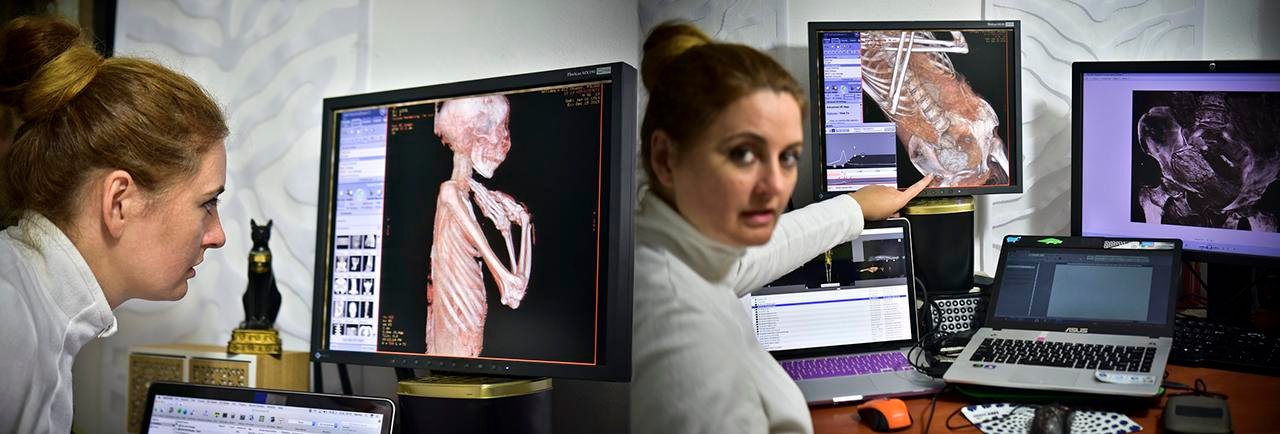 Archaeologist Kamila Braulińska uses a variety of software tools to process medical imaging data in her research on Egyptian mummies. Credit: K. Braulińska
Archaeologist Kamila Braulińska uses a variety of software tools to process medical imaging data in her research on Egyptian mummies. Credit: K. Braulińska
The debate gained international prominence and led Braulińska to solicit the investigation by an independent global team of experts. She made this request at the World Congress on Mummy Studies in Bolzano, where Braulińska urged Egyptologists, radiologists, and archaeologists to re-examine the evidence. Many archaeologists expressed strong support for the re-evaluation, which resulted in the organization of an independent committee of scientists from nine countries, including Egypt, the U.S., and the U.K., to review the CT scans.
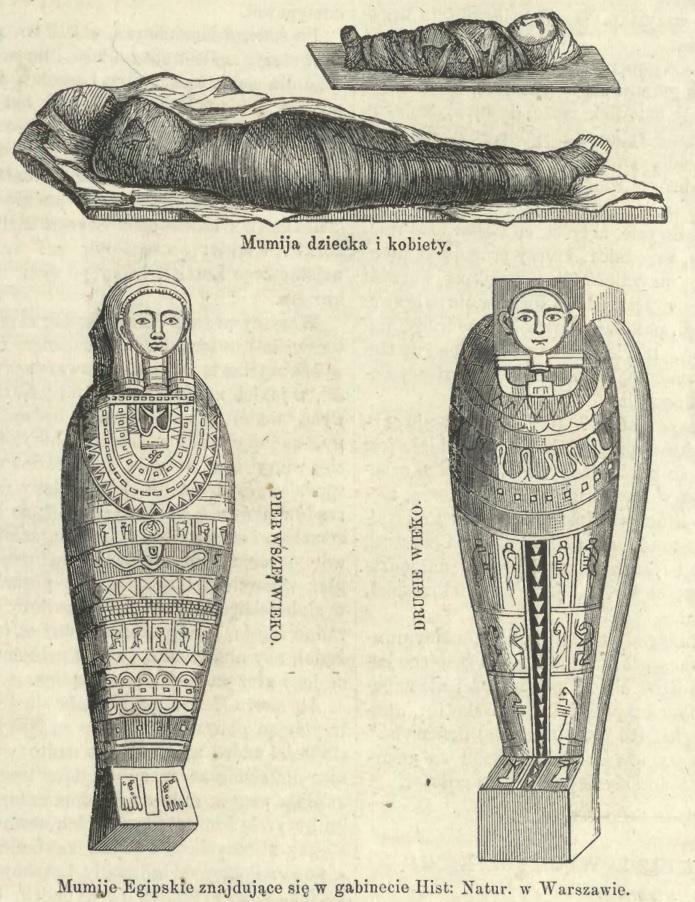 Illustration from the magazine “Children’s Friend” from 1862, depicting mummies from the collection of UW.
Illustration from the magazine “Children’s Friend” from 1862, depicting mummies from the collection of UW.
Among the investigating experts was Prof. Sahar Saleem from Cairo University, a leading investigator and radiologist known for her scholarly work on mummified Egyptian pharaohs, including Tutankhamun. Previously, Saleem had criticized the pregnancy ᴀssertion and stated that, in the scans examined, fetal remains were not evident. Her expertise in fetal diagnostics further discredited the “pickling” hypothesis of 2021.
Eventually, the study concluded that the Mysterious Lady was not pregnant nor suffering from cancer. The researchers emphasized that this should conclude the debate once and for all. “This should resolve once and for all the discussion of the first alleged case of pregnancy identified inside an ancient Egyptian mummy, as well as the dispute about the presence of nasopharyngeal cancer,” the study stated.
More information: Warsaw Mummy Project
Braulińska, K., Cavalli, F., Čavka, M. et al. (2025). Innovative approach to the verification of the alleged pregnancy and cancer in the Warsaw mummy: international case study with extended research. Archaeol Anthropol Sci 17, 65. doi:10.1007/s12520-024-02145-8
